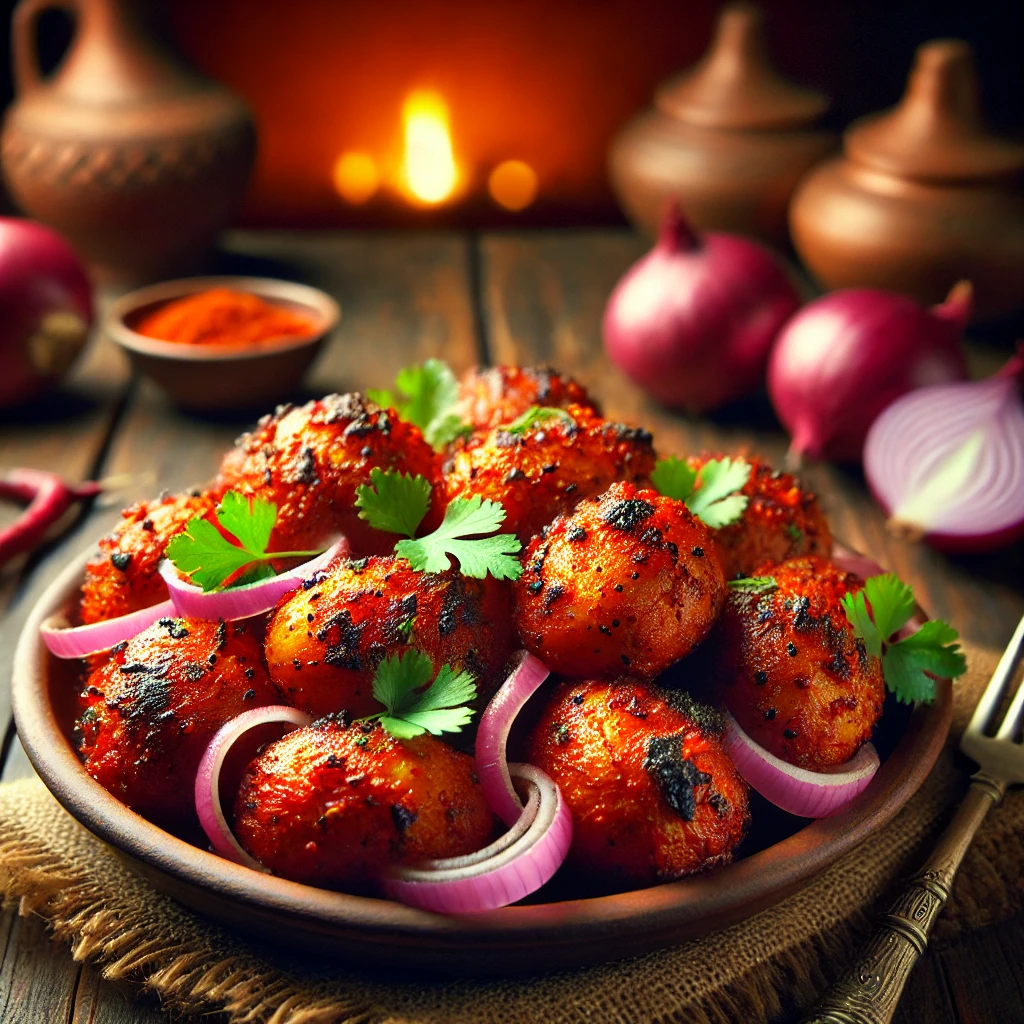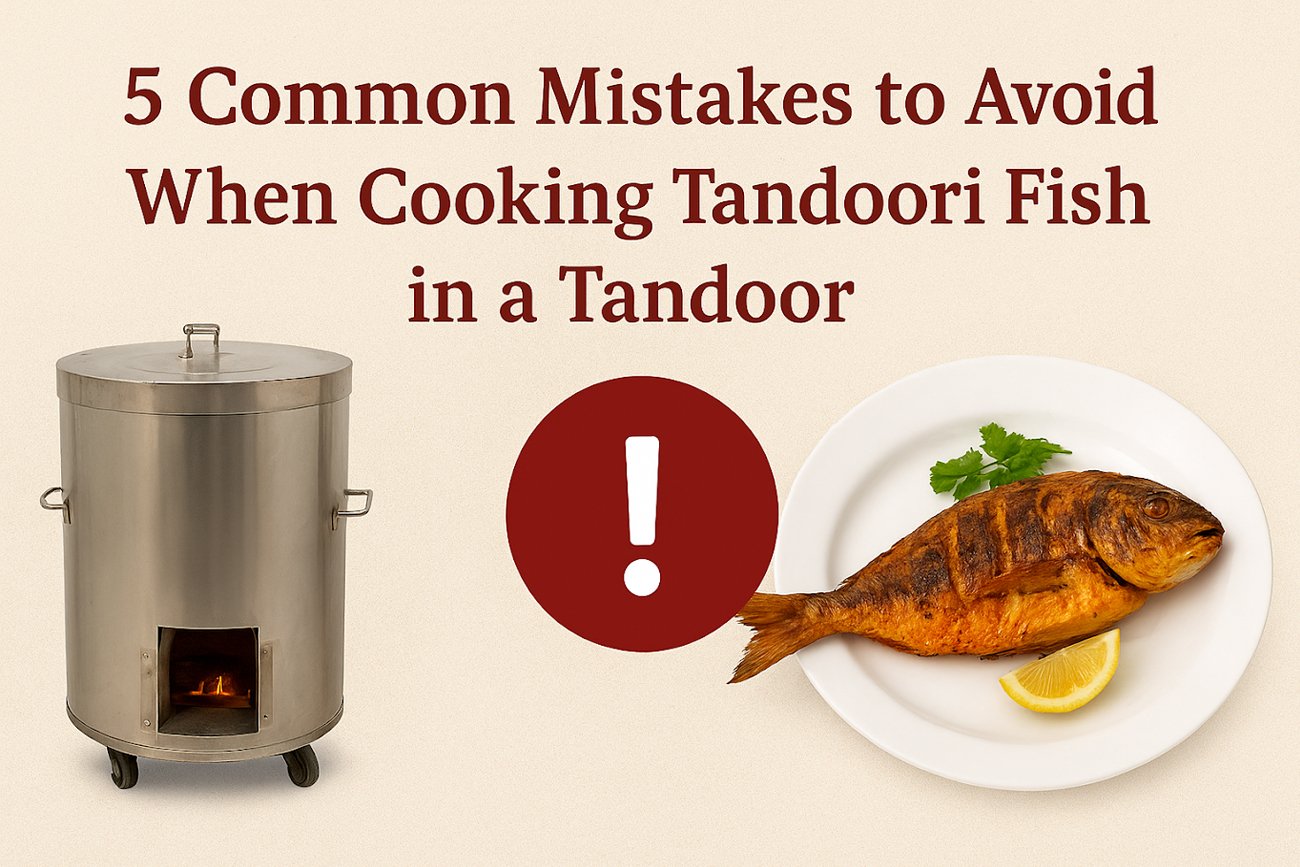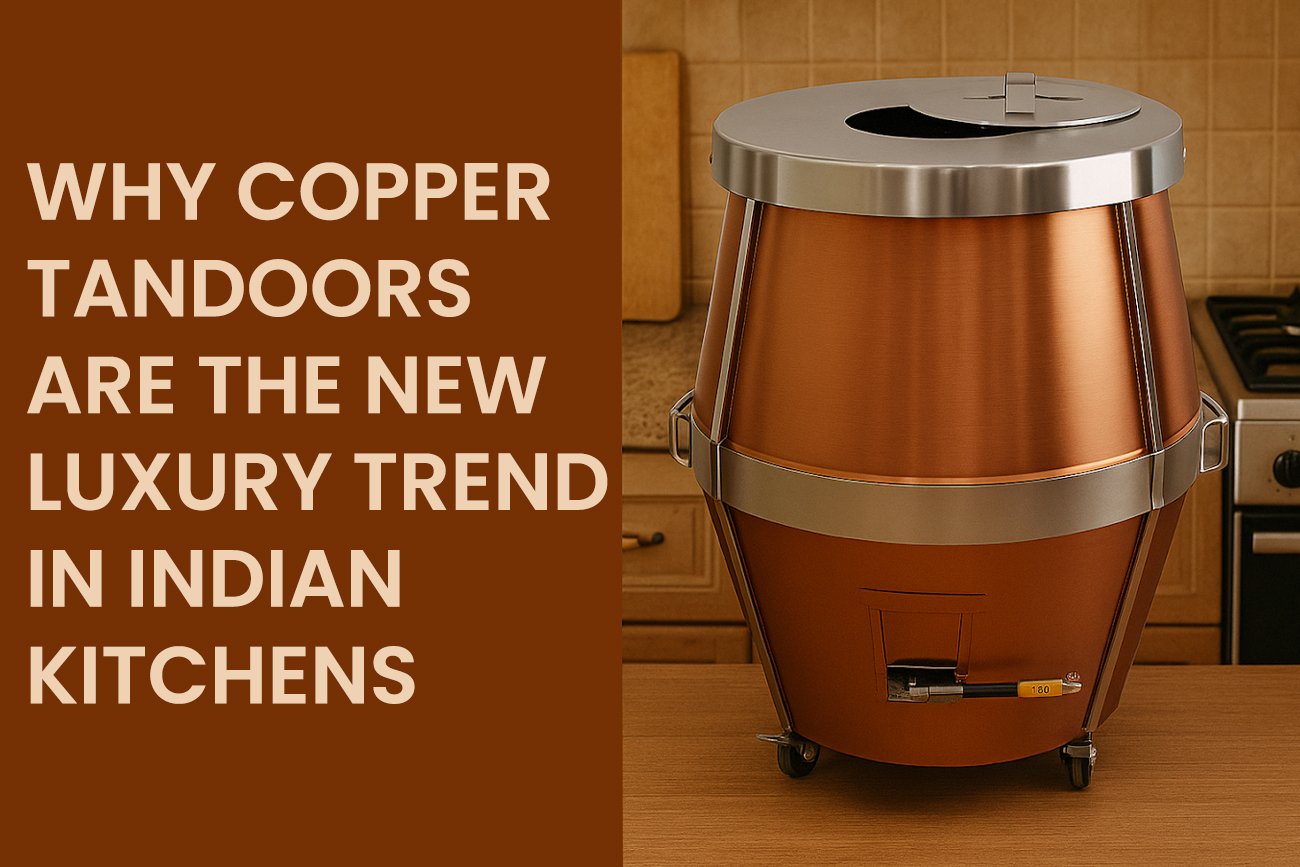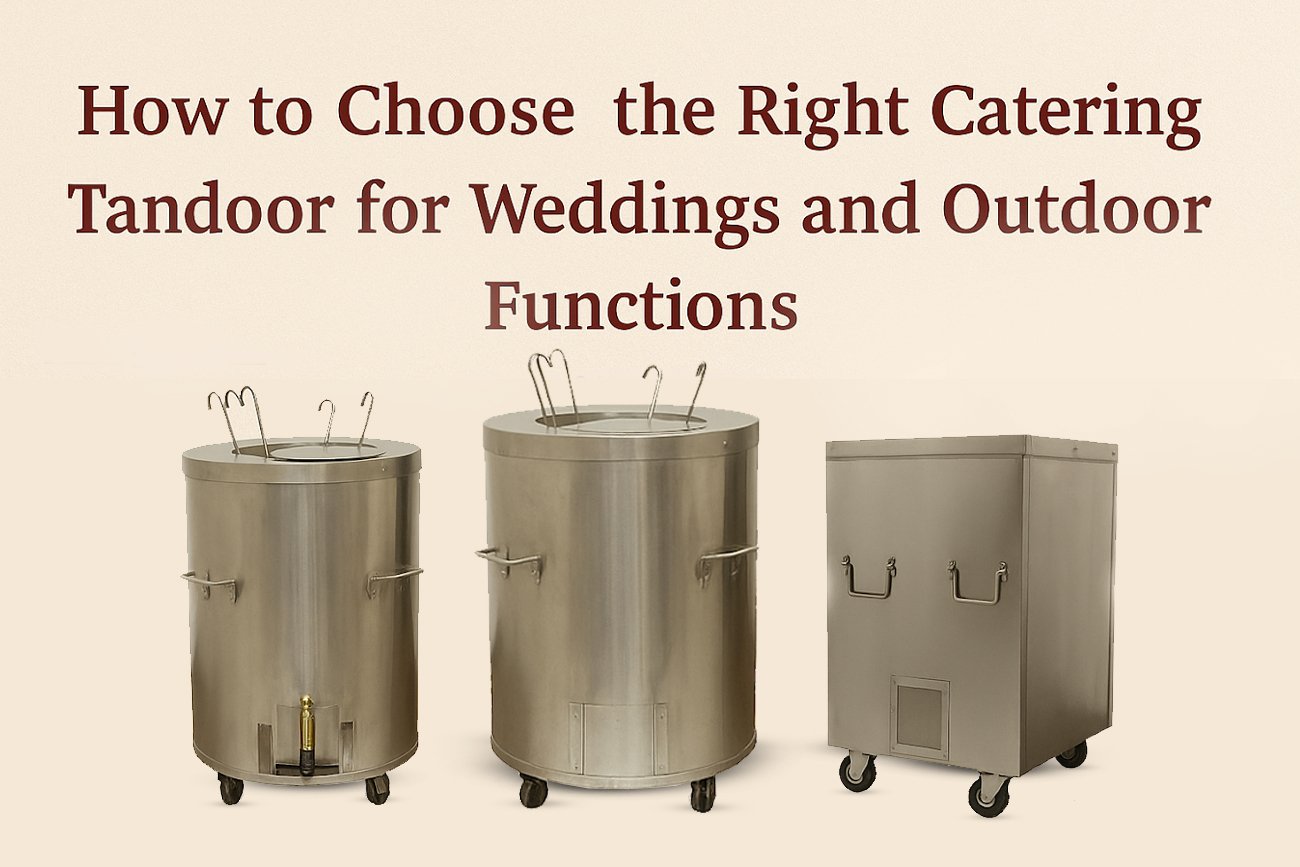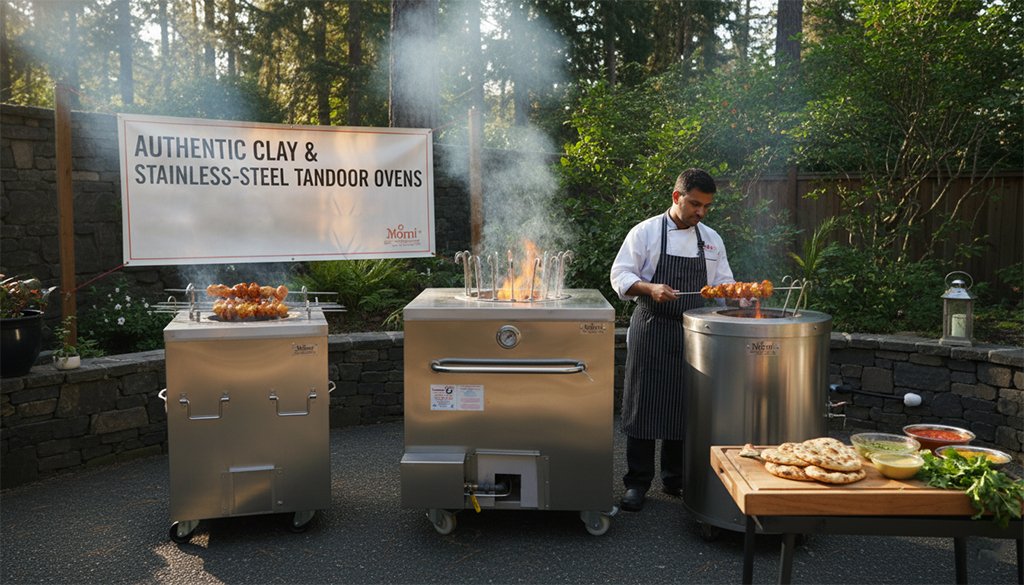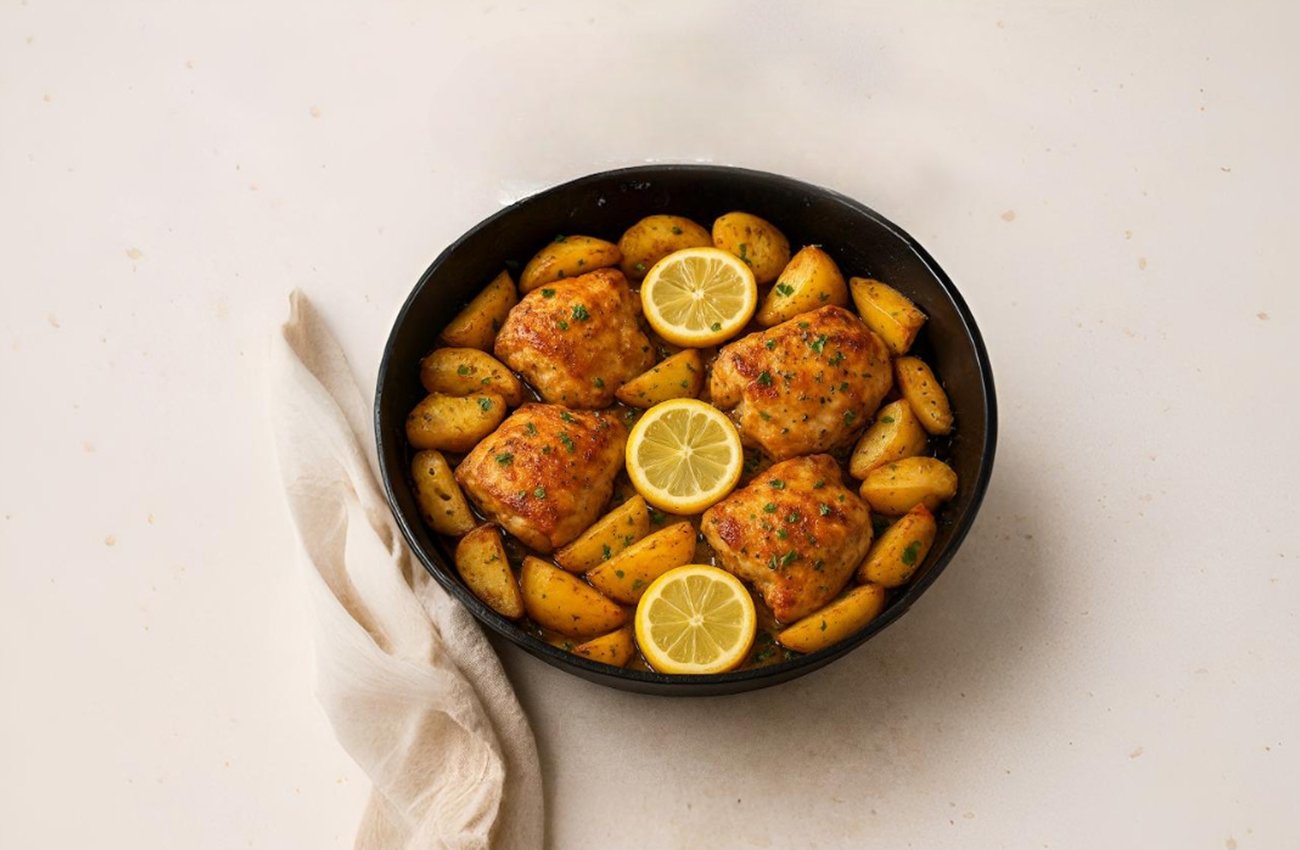
Propane Gas Tandoor Oven vs. Charcoal Tandoor Oven: Which is Right for You?
If you’re thinking about diving into tandoori cooking, you might wonder which tandoor is best for you. Should you go for a Propane Gas Tandoor Oven or a Charcoal Tandoor Oven? Both options offer unique experiences and flavors. Choosing the right one can make all the difference in your cooking. Let’s explore the benefits and drawbacks of each type to help you decide which tandoor suits your needs.
The Basics: What is a Tandoor?
Before we jump into comparing propane gas tandoor ovens and charcoal tandoors, let’s quickly understand what a tandoor is. A tandoor is a traditional clay oven that cooks food using high heat. It is commonly used in Indian and Middle Eastern cuisine for cooking meats, breads, and vegetables. The heat comes from the bottom of the oven, where fuel—either gas or charcoal—burns to cook the food. The intense heat inside the tandoor gives tandoori dishes their unique char and smoky flavor.
Benefits of Using a Propane Gas Tandoor Oven
A Propane Gas Tandoor Oven is a modern twist on the traditional tandoor. It uses propane gas as its fuel source, providing a convenient and easy way to enjoy tandoori cooking. Here are some of the advantages of using a propane gas tandoor:
1. Easier Temperature Control
One of the biggest challenges when using any tandoor is controlling the temperature. With a propane gas tandoor oven, managing the heat becomes much easier. You can adjust the temperature by simply turning the gas knob. This allows you to raise or lower the heat instantly, making it perfect for cooking different types of food that need various temperature settings. Whether you’re grilling vegetables or roasting a whole chicken, you can get the temperature just right.
2. Convenient and Quick to Use
If you’re short on time but still want to enjoy a delicious tandoori meal, a propane gas tandoor oven is the way to go. Lighting a gas tandoor takes only a few minutes. You don’t have to wait for charcoal to heat up, which can take a lot longer. This convenience makes gas tandoors ideal for busy weeknight dinners or when you’re hosting a quick backyard gathering. You can start cooking almost immediately.
3. Cleaner and Less Messy
With a propane gas tandoor oven, there’s no need to deal with ashes or leftover charcoal pieces after cooking. This makes cleaning up much easier compared to using a charcoal tandoor. Since there are no messy coals to manage, you can enjoy your meal without worrying about an extensive cleanup afterward.
4. Suitable for All Weather Conditions
Gas tandoors are easy to use in any weather. Because you can start and control the heat quickly, you don’t have to worry about windy conditions making it hard to light the fire, as you would with charcoal. Whether it’s cold or rainy outside, you can still enjoy tandoori cooking with a propane gas tandoor oven.
Drawbacks of a Propane Gas Tandoor Oven
While a propane gas tandoor oven has many benefits, it does come with some downsides. Here are some points to consider:
1. Lacks the Smoky Flavor of Charcoal
When it comes to authentic tandoori flavor, charcoal still wins. The smoke from burning charcoal gives food a distinct taste that gas cannot fully replicate. If you love that traditional smoky flavor that you get from charcoal-cooked tandoori dishes, a gas tandoor might feel a bit lacking. While propane tandoors do offer great flavor, it is not quite the same as the deep, smoky taste that comes from a charcoal fire.
2. Can be Less Authentic for Traditional Cooking Enthusiasts
For those who want a completely traditional experience, using a gas tandoor might not feel quite as authentic. The process of lighting charcoal, managing the embers, and using a traditional clay oven has its own charm. If you enjoy the ritual and challenge of working with a traditional charcoal tandoor, then a gas-powered tandoor may not satisfy you in the same way.
3. Requires Propane Refills
A propane gas tandoor oven requires a steady supply of propane gas. If you cook often, you’ll need to make sure you always have enough propane on hand. Running out of propane in the middle of cooking can be frustrating. It’s essential to keep an extra tank available to avoid interruptions.
Benefits of a Charcoal Tandoor Oven
A Charcoal Tandoor Oven provides a more traditional approach to tandoori cooking. The heat comes from burning charcoal at the bottom of the clay oven. Here’s why many people still prefer a charcoal tandoor:
1. Rich, Smoky Flavor
The most significant advantage of using a charcoal tandoor is the rich, smoky flavor it adds to the food. The juices from the meat or vegetables drip onto the hot charcoal, creating a smoky convection that infuses the food with a deep, flavorful aroma. This is what gives traditional tandoori dishes their signature taste.
2. Traditional Cooking Experience
A charcoal tandoor offers a cooking experience that feels more authentic. The process of lighting the coals, waiting for them to reach the perfect temperature, and then cooking over the hot embers mirrors the way people have cooked for centuries. It allows you to embrace the art of tandoori cooking just as it has been done for generations, especially in regions like Punjab, India, where the tandoor originated.
3. High Cooking Temperatures
Charcoal can reach very high temperatures, making it ideal for certain types of tandoori dishes. High heat can give food a better char on the outside while keeping it juicy on the inside. The intense heat is perfect for cooking thick pieces of meat, like tandoori chicken or lamb, and for achieving that characteristic crispy naan bread.
Drawbacks of a Charcoal Tandoor Oven
While the traditional appeal of charcoal tandoors is undeniable, there are some drawbacks you should be aware of:
1. Harder Temperature Control
Controlling the heat in a charcoal tandoor can be tricky. It takes some skill and experience to get the temperature just right. You have to manage the amount of charcoal and adjust the airflow to control the heat. For beginners, this can be a bit challenging. Unlike a propane gas tandoor oven, you cannot simply turn a knob to adjust the heat.
2. Messier Cleanup
Charcoal tandoors produce ash, which means you’ll need to clean out the ashes and any leftover charcoal bits after cooking. This can be a messy process, especially if you cook frequently. You also need to dispose of the ashes properly to avoid any safety hazards.
3. Time-Consuming to Light
Lighting a charcoal tandoor takes time and patience. You need to wait for the charcoal to heat up and become evenly hot before you can start cooking. This process can take 30 minutes or more. If you’re in a rush or want to cook quickly, a propane gas tandoor oven would be a more convenient choice.
Comparing Charcoal vs. Propane Gas Tandoor Ovens: Which One is Better?
The choice between a propane gas tandoor oven and a charcoal tandoor depends on what you value most in your cooking experience. Let’s break down the main differences to help you decide.
Temperature Control: Propane Gas Wins
If easy temperature control is important to you, then a propane gas tandoor oven is the better choice. You can easily adjust the heat to your liking, making it perfect for both beginners and seasoned cooks.
Flavor: Charcoal Takes the Lead
If you want the rich, smoky flavor that is characteristic of traditional tandoori dishes, then a charcoal tandoor is your best option. The smoke from the charcoal adds an authentic touch that gas cannot match.
Convenience: Propane Gas is More User-Friendly
When it comes to convenience, a propane gas tandoor oven is hard to beat. It lights up quickly, heats evenly, and is easier to clean. Charcoal, on the other hand, takes time to light and leaves behind ashes that need to be cleaned up.
Cooking Time: Propane Gas is Faster
If you’re looking for a quick cooking experience, a propane gas tandoor oven gets the job done faster. You can start cooking within minutes of lighting it. Charcoal requires more time to heat up, which may not be ideal if you’re cooking on a tight schedule.
Tandoor Morni’s Dual-Action Tandoor: The Best of Both Worlds
If you can’t decide between a propane gas tandoor oven and a charcoal tandoor, why not have both? Tandoor Morni offers a dual-action tandoor that can switch between gas and charcoal. You get the convenience of gas when you need it and the traditional flavor of charcoal when you want to enjoy authentic tandoori cooking.
Our tandoors are designed to make switching between gas and charcoal easy. This flexibility allows you to experiment with different cooking styles and find what works best for you. Whether you’re hosting a quick weeknight dinner or a traditional family gathering, Tandoor Morni’s dual-action tandoor has you covered.
The Advantages and Disadvantages of Charcoal Tandoor vs. Propane Gas Tandoor
To help you make an informed decision, let’s summarize the pros and cons of each option:
Propane Gas Tandoor Oven: Advantages
-
- Easy Temperature Control: Adjust heat levels quickly and easily.
-
- Quick to Start: Lights up and heats quickly.
-
- Less Mess: No ashes to clean up.
-
- All-Weather Use: Works well even in windy or cold conditions.
Propane Gas Tandoor Oven: Disadvantages
-
- Less Smoky Flavor: Lacks the deep, smoky taste of charcoal.
-
- Not as Authentic: May not provide the traditional tandoori cooking experience.
-
- Propane Refills Needed: You need to keep an extra propane tank available.
Charcoal Tandoor Oven: Advantages
-
- Authentic Smoky Flavor: Adds a rich, smoky taste to the food.
-
- Traditional Cooking Experience: Mirrors the classic tandoori style.
-
- High Heat for Crisp Results: Great for achieving a crispy texture on breads and meats.
Charcoal Tandoor Oven: Disadvantages
-
- Difficult to Control Temperature: Requires skill to manage heat levels.
-
- Messy Cleanup: Ashes need to be removed after cooking.
-
- Takes Time to Light: Lighting charcoal can be time-consuming.
Choosing the Right Tandoor for Your Needs
Your choice between a propane gas tandoor oven and a charcoal tandoor will come down to your personal preferences. If you value convenience, ease of use, and fast cooking, a propane gas tandoor oven will serve you well. However, if you seek an authentic tandoori flavor and enjoy the traditional cooking process, then a charcoal tandoor is the better choice.
For beginners, starting with a propane gas tandoor oven might be the way to go. It allows you to get used to tandoori cooking without the hassle of managing charcoal. As you gain more experience, you might want to try a charcoal tandoor to explore deeper flavors.
How to Get Started with Tandoor Morni
If you’re ready to experience the joy of tandoori cooking, Tandoor Morni offers a range of tandoors to suit your needs. From residential tandoors for home use to commercial options for restaurants, we have it all. Our propane gas tandoor ovens, charcoal tandoors, and dual-action tandoors are made with quality materials and designed for durability.
Visit Tandoor Morni today to browse our selection and find the perfect tandoor for your outdoor kitchen. Whether you want to enjoy a quick grilled meal or dive into traditional tandoori cooking, we have the right tandoor for you.
Final Thoughts
Choosing between a propane gas tandoor oven and a charcoal tandoor is about finding the right balance between convenience and flavor. Both options have their advantages and disadvantages, but your personal cooking style will ultimately determine the best fit. With Tandoor Morni’s range of tandoors, you can experience the best of both worlds and enjoy authentic tandoori cooking anytime.
Try out our tandoors and elevate your outdoor cooking experience. Whether you prefer the ease of propane or the rich taste of charcoal, Tandoor Morni has the perfect tandoor to suit your needs.
Need Help? Order and Technical Support
Have questions or ready to place an order? Reach out to us via phone at +1(727) 251 6924 or email us at info@tandoormorni.com.
Need detailed instructions? Explore the Operation Manual for our CH & CS models to get started with your Tandoor oven today.
About Tandoor Morni
Tandoor Morni, in business since 1992, is a trusted name in premium Tandoori Clay Ovens, known for crafting high-quality traditional and commercial tandoors. With a commitment to excellence, Tandoor Morni offers a wide range of tandoors, including commercial, residential, catering, and copper models. Our tandoors are built with durable materials and designed for efficient heat distribution, ensuring authentic flavors and fast cooking. Each oven features customizable options like gas, wood fire, or charcoal compatibility, making them suitable for various cooking needs.
Common Queries – FAQ’S
Can I use a tandoor Indoors?
Yes, certain tandoor models are designed for residential use, including compact, home-friendly versions. However, using a tandoor indoors requires proper ventilation and adherence to safety precautions to manage high heat and potential smoke. Always consult the manufacturer’s guidelines to ensure safe indoor use. For best results, they are often used in well-ventilated spaces or outdoors.
Are Tandoor-Cooked Foods Healthy?
Yes, tandoor-cooked foods are often considered healthy because they typically require little to no oil. The high cooking temperatures allow the food to cook quickly, preserving nutrients while reducing the need for additional fats. Additionally, the vertical cooking method allows excess fats to drip away, resulting in leaner dishes.
What Types of Fuel Can Be Used in a Tandoor?
Tandoors can be heated using charcoal, wood, natural gas or propane. Charcoal and wood provide an authentic smoky flavor, while natural gas or propane is more convenient and easier to control. The choice of fuel often depends on the specific cooking requirements and local regulations, especially in commercial settings.
How Does a Tandoor Oven Differ from a Conventional Oven?
Unlike conventional ovens, which use electric or gas heat, a tandoor is made from clay and uses charcoal, wood, or gas to heat the walls. The cylindrical shape and porous clay walls create an environment where heat circulates evenly, cooking food quickly while adding a smoky flavor. Conventional ovens, in contrast, lack the intense heat and unique cooking technique of a tandoor.
How Much Maintenance Does a Gas Tandoor Require?
Gas Tandoor needs regular maintenance, though less than Charcoal Tandoor models. Here’s a breakdown:
- Daily Maintenance: Wipe down the inner chamber and clean the burner.
- Weekly Maintenance: Check the burner and gas line for any blockages or leaks.
- Monthly Maintenance: Deep clean the gas pipes, burners, and inner chamber.
- Quarterly Maintenance: Have a professional inspect the gas connections and burners.
- Annual Maintenance: Perform a full inspection and reapply clay lining if needed.
Avoid exposing the tandoor to excessive water, and gradually increase heat to prevent cracks.
How Can I Make a Payment for My Tandoor Order?
You can pay for your tandoor order through our website by placing an online order using the available payment options. If you prefer to place an order over the phone, we accept payment via Zelle for a quick and secure transaction.
Which Tandoor Oven Size Should I Choose?
- For Home Use: Consider the number of family members or guests you typically serve. A mini tandoor is ideal for smaller gatherings.( Suggested Product: R26 )
- For Restaurants: Measure the entrance to ensure the oven fits through the door. Select a size based on available space and cooking needs. (Suggested Product: CH02)
- For Naan Bread: Opt for an oven with a smaller mouth opening, resulting in a more egg-shaped clay pot, perfect for naan preparation. For larger meat portions, choose a bigger oven to maintain heat longer. (Suggested Product: CH04)
- For Catering: A Clay Tandoor Oven is suitable for catering due to its lightweight and easy transport features. (Suggested Product: CS01)
- For Banquet Halls: A larger oven with a spacious clay pot is ideal for preparing multiple dishes quickly during big events. (Suggested Product: CH06)
- For Open Kitchens or Outdoor Patios: Choose a model with a decorative finish, such as a copper tandoor, to enhance the kitchen’s appearance with a touch of elegance. (Visit Our Copper Tandoor).
What Should You Consider When Installing a Restaurant Clay Oven?
- When installing a tandoor in your restaurant kitchen, consider the following:
- Space and Placement: Ensure there is enough clearance around the tandoor for ventilation and safety, with fireproof or heat-resistant flooring.
- Ventilation and Exhaust: Proper ventilation is essential to handle heat and smoke, especially with charcoal tandoors.
- Safety Measures: Use heat-resistant barriers if the tandoor is near other equipment, and keep fire safety equipment like extinguishers handy.
- Fuel Supply: Decide between charcoal, which offers traditional flavors, and gas, which is easier to manage.
By keeping these points in mind, you can ensure a safe and efficient tandoor setup. If you're looking for a Restaurant Clay Oven for Sale, make sure to choose a model that fits your kitchen's requirements and meets all necessary safety standards.
- Menu Considerations: Larger tandoors or multiple units may be needed if you have a diverse menu or high demand during peak hours.
- Maintenance and Cleaning: Clean the tandoor daily and monitor for any wear or damage to the clay or gas parts.
- Compliance with Regulations: Ensure your installation meets local safety standards and health codes.
- Staff Training: Train staff in safe tandoor operation and fire safety protocols.


